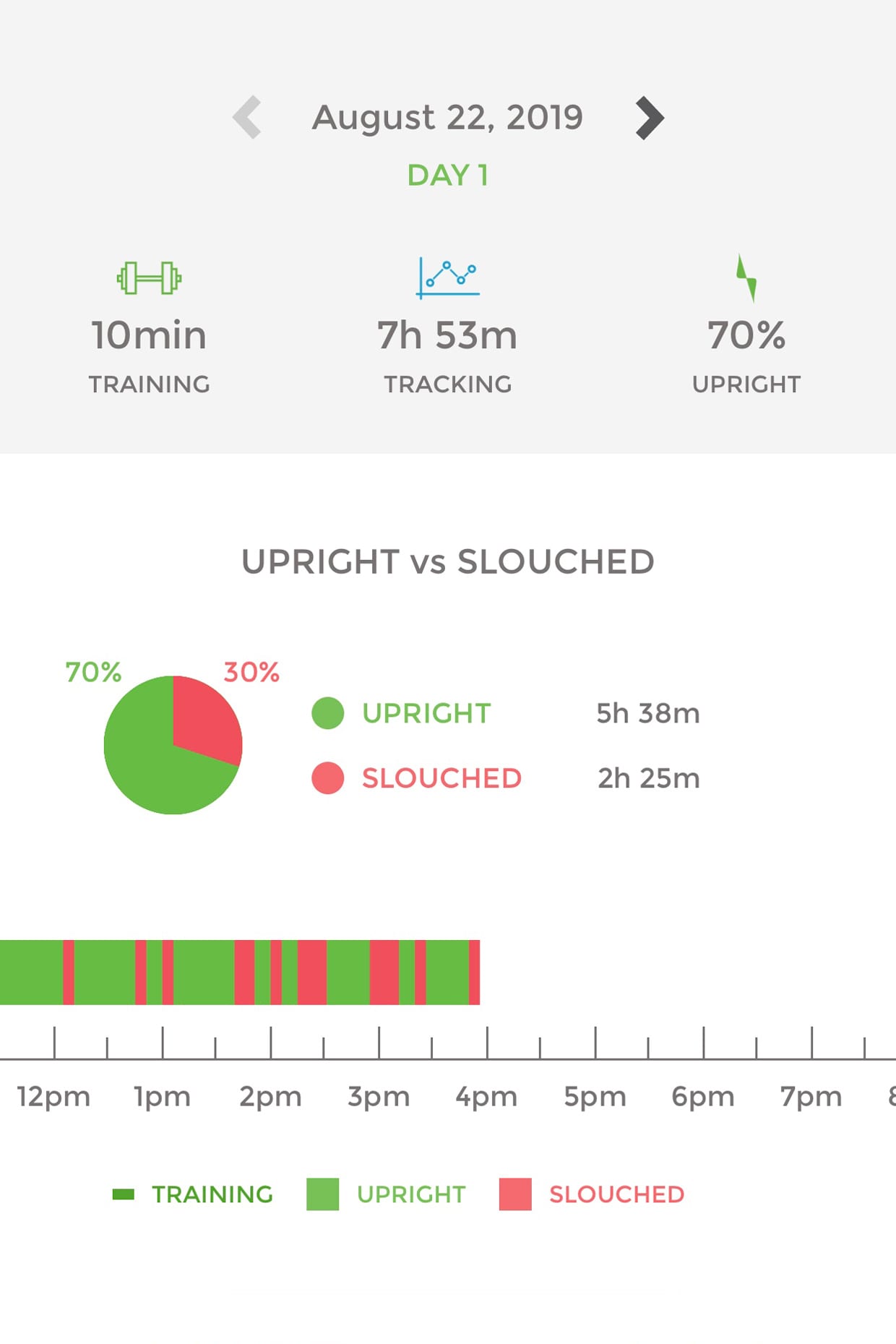Can I get a show of hands from anyone out there who actually manages to sit up straight all day long? As I look around the office, I noticed that everyone is hunched over at their desks. In the game of life, we are acute angles, emphasis on cute.
The 90-degree stiffness associated with good posture is as foreign to me as it is impractical. My job, like most people, involves sitting at a desk for eight-plus hours. And even when I decide to make posture a priority, after 30 minutes I find myself back in a slumped position. So, I decided to make peace with my slouching tendencies. Maybe the hunch showcases my no-frills approach to life, my comfortable nonchalance.
That is until I noticed my back started to ache. I always knew this day would come, as I received many ominous warnings from my older friends about the horrors of adulthood — but I didn’t think it would hit me at 22.
Daily bad posture
can also contribute to low back pain, sciatica and even jaw pain.
“A well-functioning spine and nervous system are crucial to good health,” says Philip Cordova, D.C., a chiropractor at CORE chiropractic in Houston. “Good posture reduces strain on the spine while bad posture increases that pressure.”
But what happens to you over time if you never correct your posture? Cordova says, “The obvious symptoms are headaches, neck pain, upper back pain and burning between the shoulder blades. However, daily bad posture can also contribute to low back pain, sciatica and even jaw pain. Long-term, your spine will go through degenerative changes that are permanent.”
According to Cordova, it is important to look at our day-to-day routines and counter anything that appears imbalanced if we want to improve our posture. “If you spend too much time hunched over a computer, your chest and the front of your neck will get tight. The back of your neck and spine will grow longer and weaker,” adds Cordova.
So, I am on a newfound mission to correct my posture — and everyone knows that when it comes to perfect posture, a classical ballet dancer is miles ahead of everyone else. So, I reach out to Tiekka Tellier, the owner of Everyday Ballet in New York City. “Ballet technique is built around posture. It trains the muscles of the back and core how to support the spine in motion, which adds grace and elegance to every movement,” she says.
And while being as graceful as Anna Pavlova really speaks to me — if I had started ballet classes when I was three maybe I wouldn’t be in this (slouched) position — what if the posture corrector now being targeted to me on Instagram as a result of this article actually worked? I pass on the idea of wearing a physical back brace because of aesthetic reasons and the fact that long-term use can lead to possible muscle atrophy, but perhaps a digital gadget can keep me aligned in my goals (pun intended).
To test my theory, I reach out to UPRIGHT so I can try out their newest device, UPRIGHT GO 2, the personal posture trainer. Founded in 2015, UPRIGHT is the only trainable wearing device out on the market right now.
UPRIGHT GO 2 ($99.95)

The Claim: The UPRIGHT GO 2 is an adhesive wearable posture trainer placed on your upper back that gently buzzes when you are slouching in real time. The UPRIGHT app (iOS and Android) will provide you a personalized training plan along with daily education, goals, and posture stats.
The Trial: I open a box that contains a small white device, a case, reusable silicone adhesives, charging cables, alcohol pads, and an adhesive removal tool. There are little to no instructions, which overwhelms me, but I realize that you have to download the UPRIGHT GO app, which features a helpful step-by-step tutorial.
After charging my device (it has a charge time of up to 30 hours), I apply the sticky adhesive to my middle back. You don’t see it under my clothing, which I appreciate. You have the option to choose between stationary training (extended sitting or standing), standard (for moderate activity), and active (for a dynamic routine). I set it on a stationary routine and begin the first day of my personalized training plan. Everyone’s training period is different, but the device is not meant to be worn all day long. Rather, the training sessions are designed to condition your muscles to where they are not dependent on the device. The idea is that wearing the device for short periods of time daily helps build muscle memory for good posture.
For nine minutes I am uncomfortable because this may be the first time I have consciously sat up straight at work. I feel slightly harassed by the device as it gently vibrates each time I begin to slouch. Although the minutes go by quickly, near the end of my training session the buzzing picks up as I go back to my old ways. Once the training is over, I switch over to tracking mode so the app can get a better idea of my daily habits. Each day my training goes up one minute and the app also reminds me to walk, stand and stretch through smartphone alerts.
https://www.instagram.com/p/Bxu6cq0Hue2/
The Verdict: It took me a while to warm up to the idea of the device. On the first day, I boldly yelled “upright NO” but stuck through it and am glad I did. The brand claims that you will feel the change within 14 days, and I stand by that. The first few days were hard, but after a while, you get used to the new upright position. While I still slouch quite a bit, I am far more aware of my posture than I used to be. Even when not wearing the device I feel a shadow-buzz and stiffen back up. I wrote this entire piece with a straight back, drive with the posture of an airline pilot, and bring my phone up to eye level when texting to avoid the buzzing and tech neck.







